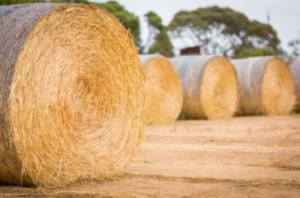Net Wrap Bales For Your Agriculture Operation
There are many benefits to using net wrap bales for your agriculture operation. They’re easy to maintain, but a few things to consider before purchasing net wrap bales for your operation. Here are some of them:
Cost of net wrap bales
Buying net wrap to cover round bales can be expensive, especially in the upper Midwest. In addition, the nets are difficult to remove during winter feeding. That means the time saved at harvest may be negligible. But if you prefer this method, here are some things you should know. First, you’ll have to buy extra baler equipment to use the net wrap. The baler should also have a breathable net wrap.
 Net-wrapped bales are better for aesthetics and marketability. Compared to twine-wrapped bales, net-wrapped bales have less water loss, improve moisture-binding abilities, and reduce dry matter loss. They also tend to last longer if you store them in sheltered areas. The benefits of net-wrapped bales are apparent, but there are many things to consider when deciding between net wrap and twine.
Net-wrapped bales are better for aesthetics and marketability. Compared to twine-wrapped bales, net-wrapped bales have less water loss, improve moisture-binding abilities, and reduce dry matter loss. They also tend to last longer if you store them in sheltered areas. The benefits of net-wrapped bales are apparent, but there are many things to consider when deciding between net wrap and twine.
Quality of net wrap bales
The strength and durability of net wrap will vary depending on the material used to produce the bales. Some types of material have higher tensile strength than others. It is because netwrap is designed to maintain 50% of its applied strength over 12 months. It is important to remember that some netwrap is susceptible to deterioration after exposure to extreme weather conditions, including high U.V. radiation.
New Holland netting is manufactured in the USA and is guaranteed to fit all models of round balers. The four and five-foot sizes wrap the edge correctly, while the wide-edge style covers the entire bale. Ask your dealer which size is right for your baler. New Holland Round Baler Net Wrap is a premium-quality net wrap that works with all crop types. It is made to last and offers superior strength and durability.
Sisal twine is an exception to net wrap.
Sisal twine is often recommended when securing hay bales, but it has some drawbacks. For one thing, it is a pain to pick up after bale grazing. In addition, it often becomes entangled in leftover feed. Worse, if left on the ground, it poses a hazard to cattle. If left alone, it can become stuck in cattle’s hooves, legs, or heads and cause digestive problems. Although there is no formal research on digestive problems caused by plastic twine, producers report seeing ear tags becoming entangled in sisal twine and coming out of the animals’ ears.
The cost of using net wrap AU may be prohibitive for producers, especially those in the upper Midwest. Not only is it costly per bale, but it is also difficult to remove before winter feeding. Even though sisal twine is more expensive than synthetic twine, it does offer an additional benefit: a longer storage life before decomposition. However, the cost of solar-degradable twine is offset by the time it takes to wrap a bale.
If you run an agriculture operation, you’ve probably considered using Net Wrap bales to store your animal feed. While this can be a cost-saving measure, it’s not a perfect solution. For example, the weather in winter can make net wrap bales challenging to store. In addition, you can avoid animal health issues by removing the net wrap before winter sets in. To avoid these problems, you should store net wrap bales near your feeding area or barn.
In addition to reducing your cost per bale, net-wrapped bales look neater and maintain their shape better. It is imperative in farmer’s markets and box stores, where visual appeal is essential to customers. Net-wrap bales are also more visually appealing than twine-wrapped bales, which may make a difference with customers. Regardless of storage conditions, net-wrapped bales will hold up better than twine-wrapped bales. Plus, you’ll save time, fuel, and hay using a net-wrap baler instead of twine balers.
Consider purchasing a mini round baler if you’re interested in using net wrap bales as a storage solution. These small round balers fit in the back of a pickup truck and use less space than a square baler. Plus, they’re safer on slopes and have fewer parts to break. Square balers often “kick” 90 times per minute, and the constant jerking motion can be exhausting for a small tractor operator.
